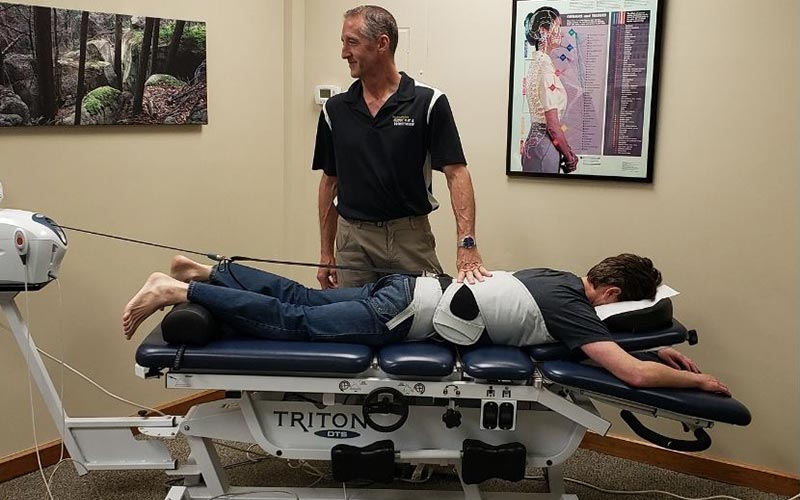Degenerative disc disease can be a painful and frustrating condition, especially for people dealing with chronic lower back pain, sciatica, or herniated discs. One treatment that’s been gaining attention is Spinal Decompression Therapy—a non-invasive back treatment that aims to relieve pressure on the spine and help manage disc-related conditions. But many patients wonder: Is spinal decompression therapy safe for degenerative disc issues?
If you’re living in Torrance, CA and considering your spinal health treatment options, understanding how this therapy works and whether it’s right for you is essential. Let’s dive into the facts, explore the benefits, and look at how it compares to other treatments like surgery and traditional physical therapy.
What Is Spinal Decompression Therapy and How Does It Work?
Spinal decompression therapy is a non-surgical method used to treat problems like herniated discs, bulging disc management, and degenerative disc conditions. This treatment gently stretches the spine using a motorized table or specialized equipment. The goal is to relieve pressure on spinal discs—the gel-like cushions between your vertebrae.
When the spine is stretched, it creates a small amount of negative pressure. This change can help pull bulging or herniated disc material back into place and promote better flow of nutrients, water, and oxygen to the affected areas, which are all important for healing. It’s often considered a safe and effective treatment for many people who want to avoid back surgery.
In Torrance, CA, spinal decompression therapy is becoming more popular among patients looking for FDA-approved spinal treatments that don’t involve incisions or downtime. Many clinics also pair it with chiropractic decompression and physical therapy for disc issues to enhance results.
How Safe Is Spinal Decompression Therapy for Degenerative Disc Disease?
When performed correctly by trained professionals, spinal decompression therapy is generally safe for people with degenerative disc issues. It’s a non-invasive treatment, which means it doesn’t carry the risks of infection or complications like surgery might.
Most patients report a feeling of relief or gentle stretching during the session. There’s typically little to no recovery time, making it a more convenient option than surgery. However, it’s important to remember that not everyone is a good candidate. Individuals with certain conditions—like fractures, tumors, osteoporosis, or advanced spinal instability—should avoid this therapy. Always consult with a licensed provider to make sure the treatment is right for your specific condition.
In the context of spinal decompression therapy vs surgery for degenerative disc issues, many patients choose the former first, as it offers back pain relief techniques without the risks of going under the knife.
Who Should Not Do Spinal Decompression Therapy?
While spinal decompression therapy is helpful for many, it’s not for everyone. Understanding who should not do spinal decompression therapy can help avoid complications. People with metal implants in their spine, advanced osteoporosis, or spinal fractures may be at higher risk during treatment. Pregnant women are also advised to avoid this type of therapy.
Patients with certain types of cancer, infections in the spine, or conditions like abdominal aortic aneurysm should also avoid spinal traction treatments. These individuals may be better suited for alternative treatments such as traditional physical therapy, medication, or orthopedic spine care options under a specialist’s supervision.
If you’re in Torrance, CA, a qualified spine care clinic will assess your health history before recommending lumbar decompression therapy or cervical spine decompression. Your safety should always come first.
Comparing Spinal Decompression Therapy and Surgery
For people dealing with degenerative disc disease, deciding between spinal decompression therapy vs surgery for degenerative disc issues can be overwhelming. Surgery, like spinal fusion or discectomy, often requires long recovery times and can involve significant risks such as nerve damage or infections.
On the other hand, non-invasive back treatment like decompression therapy doesn’t involve cutting into the body. Most sessions last about 20–30 minutes and are often done over several weeks. Patients usually report improvements in mobility and pain levels without needing to miss work or daily activities.
However, spinal decompression therapy may not be a permanent fix for everyone. Surgery might still be necessary in cases where the spine is unstable or severely damaged. For those in Torrance, CA exploring the best spinal decompression therapy for degenerative discs, many prefer starting with the least invasive options first.
Is Physical Therapy a Better Option?
Some people might wonder whether physical therapy for disc issues is a better alternative. While spinal decompression targets the pressure inside the spine, physical therapy strengthens the surrounding muscles, improves posture, and increases mobility.
In many cases, combining both approaches yields the best results. You can receive spinal decompression therapy to relieve immediate pain and follow up with targeted exercises through physical therapy for long-term support. Patients looking for lasting herniated disc relief or chronic lower back pain management often benefit from this combined approach.
Benefits of Spinal Decompression for Disc Degeneration
There are several clear benefits for those with a degenerative spine condition. Patients often experience:
- Pain relief in the lower back, neck, and legs
- Better flexibility and posture
- Reduced inflammation around the nerves
- Improved disc function and hydration
For many, it offers a long-awaited solution after years of trying pain meds or injections with limited success. It’s also a key option for bulging disc management, helping reduce the size of the disc bulge and relieve pinched nerves.
In Torrance, CA, where active lifestyles and outdoor living are common, people are increasingly looking for natural ways to stay mobile and pain-free. Spinal decompression fits perfectly into that mindset as a drug-free, non-invasive solution to improve quality of life.
Understanding the Cost of Spinal Decompression Therapy
Let’s address the elephant in the room—spinal decompression therapy cost. While it’s not always covered by insurance, many clinics in Torrance, CA offer affordable packages and financing plans. Prices can vary depending on how many sessions you need, the type of equipment used, and whether it’s combined with other therapies.
On average, a full treatment plan may range from a few hundred to a few thousand dollars. While it may sound like a lot, it’s often far less than the total cost of surgery, especially when you factor in time off work and post-op care.
Ultimately, patients should weigh the cost against the potential benefits of reduced pain, better mobility, and avoiding surgical risks.
Conclusion
If you’re living with a degenerative disc issue and wondering whether there’s a safer, more natural way to find relief, Spinal Decompression Therapy in Torrance, CA might be the answer. It’s a non-invasive, FDA-approved option that can help reduce pain, improve function, and delay or even eliminate the need for surgery.
While not everyone is a candidate, those who qualify often find it to be one of the most effective back pain relief techniques available today. From chiropractic decompression to customized therapy plans, there are a range of treatments designed to help restore your spinal health and overall well-being.
Before making any decisions, consult with a local spine care specialist to see if spinal decompression therapy is right for your condition. Your back deserves the best—and now you know one more option to consider on your journey to healing.






